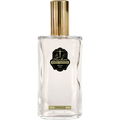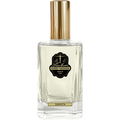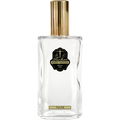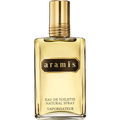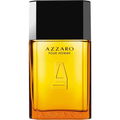
FvSpee
249 Reviews
Translated · Show original

FvSpee
Top Review
31
Colonial Goods I: Russian Riddles.
The new series "Colonial Goods," which begins with these lines, is dedicated to the fragrances that I would like to call "brown colognes." They all exhibit cologne-like properties that qualify them for inclusion in my other cologne series but are additionally characterized by brown notes such as clove, tobacco, or leather.
The title of the series naturally alludes to the former Roman colony on the Rhine, Colonia Claudia Ara Agrippinensium, the birthplace and namesake of colognes, and certainly the home of brown colognes like Russian Leather by Farina Gegenüber. At the same time, the name aims to bridge to the retail stores where overseas spices, tobacco, coffee, cocoa, and similar goods were sold, which were still referred to as "colonial goods stores" just a few decades ago.
As a reassurance, I would like to add: I consider it a given that the suffering and injustice associated with the establishment of colonies (and their economic exploitation, such as through the export of colonial goods) and also the atrocities of colonialism, such as the Congo atrocities or the genocide of the Herero after the Battle of Waterberg, must never be forgotten. However, I do not believe that the term colonial goods should be erased from the dictionary.
Describing the scents of Harry Lehmann always corresponds to the challenge of a blind test, as the company stubbornly refuses to provide a fragrance pyramid and settles for cryptic, often oddly insufficient descriptions that do not match its own scent perception and further increase confusion (in this case: "balsamic-tobacco-like," aha). The trick of peeking at Ms. Toni, who sells a considerable amount of Lehmann products in parallel distribution (with pyramid!), does not work here due to assortment reasons. Only the nose and the legally required label focusing on potentially allergenic fragrance notes on the bottle remain.
I agree with the esteemed Ttfortwo, Russian Eau de Cologne starts citrusy. I am relieved by this, as with that and the designation as "Cologne," the granted entry into this series is already almost legitimized. However, I want to emphasize that this is not an ordinary, possibly bergamot-neroli, traditional cologne, but a firmly anchored citrus built into strong brown-spicy-aromatic notes. I almost want to assert: the typical, slightly pulling citrus as the beginning of a chypre accord.
The scent lasts incredibly long on the skin: splashed on, at least six hours, likely more. That is enough time for a certain scent development, at least for a play of changing olfactory impressions. Occasionally, soft, almost vanillic notes emerge, but Russian predominantly impresses as distinctly fresh, almost summery, thus qualifying it definitively as a worthy Cologne. I cannot recognize the cognac notes that have been frequently described here. Does the scent feature the old-style leather notes (like in Knize Ten)? I hesitate. There is a resemblance, but not a very close one. Perhaps the scent is named "Russian" not without reason, but it is certainly not "Russian Leather" or "Russian Juchten" like so many others.
This robust, masculine, somewhat creaky freshness teases and vexes me; it occasionally takes on a fougère shape, only to then appear all the more clearly as a chypre (sometimes I think I smell the more masculine, cooler version of Alpa's Chypre Cologne). Fortunately, I do not receive a bonus for making a determination: so I limit myself to stating that we have before us a somewhat mysterious, but very beautiful, profoundly old-school and yet not at all boring, strikingly masculine and yet also quite suitable for a refined lady or a young girl cologne scent. And that after hours, once again very transformed, it concludes in a very beautiful base that comes across to my nose as a cheekily tonka-powdery lavender.
After Konsalik, Ttfortwo, and Grenouille have already described this scent much more beautifully, I must, to justify this comment, attempt to clarify two previously unresolved questions of humanity:
Is Russian Eau de Cologne the diluted version of Russian Juchten? After a parallel test, I tend to answer this question in the negative. The scents are similar, yes, no question, particularly Russian Juchten also comes to me (and even more so than the one discussed here) as a spicy chypre. They likely both originate from the early years of the fragrance house, and the ingredients on the label read suspiciously similar (especially coumarin and oak moss stand out in both, and citronellol and limonene are present). Nevertheless, I seem to perceive differences; the cologne appears drier and more solid than the EdP and, unlike that, a bit woody.
Why Russian Eau de Cologne and not Russian Eau de Cologne? At first, I thought we were dealing with a form of attrition, where over the decades "Das Russische Eau de Cologne" or even, as in a dictionary: "Russische Eau de Cologne, das" had evaporated the article. Now I think this scent likely originates from the golden twenties or early thirties, when "the Frenchman" was still the hereditary enemy, but every student was still studying the French language so diligently that nothing was more natural in the world than that "L'Eau" is feminine. And that thus the German adjective referring to Russia must conform in gender to the French watery noun: "Die russische Kölnisch-Eau," just like "Acqua di Colonia Russa" (and not Russo) from Santa Maria Novella. Which brings us to another scent that I would love to discuss in this series - if only I could get my hands on it!
The title of the series naturally alludes to the former Roman colony on the Rhine, Colonia Claudia Ara Agrippinensium, the birthplace and namesake of colognes, and certainly the home of brown colognes like Russian Leather by Farina Gegenüber. At the same time, the name aims to bridge to the retail stores where overseas spices, tobacco, coffee, cocoa, and similar goods were sold, which were still referred to as "colonial goods stores" just a few decades ago.
As a reassurance, I would like to add: I consider it a given that the suffering and injustice associated with the establishment of colonies (and their economic exploitation, such as through the export of colonial goods) and also the atrocities of colonialism, such as the Congo atrocities or the genocide of the Herero after the Battle of Waterberg, must never be forgotten. However, I do not believe that the term colonial goods should be erased from the dictionary.
Describing the scents of Harry Lehmann always corresponds to the challenge of a blind test, as the company stubbornly refuses to provide a fragrance pyramid and settles for cryptic, often oddly insufficient descriptions that do not match its own scent perception and further increase confusion (in this case: "balsamic-tobacco-like," aha). The trick of peeking at Ms. Toni, who sells a considerable amount of Lehmann products in parallel distribution (with pyramid!), does not work here due to assortment reasons. Only the nose and the legally required label focusing on potentially allergenic fragrance notes on the bottle remain.
I agree with the esteemed Ttfortwo, Russian Eau de Cologne starts citrusy. I am relieved by this, as with that and the designation as "Cologne," the granted entry into this series is already almost legitimized. However, I want to emphasize that this is not an ordinary, possibly bergamot-neroli, traditional cologne, but a firmly anchored citrus built into strong brown-spicy-aromatic notes. I almost want to assert: the typical, slightly pulling citrus as the beginning of a chypre accord.
The scent lasts incredibly long on the skin: splashed on, at least six hours, likely more. That is enough time for a certain scent development, at least for a play of changing olfactory impressions. Occasionally, soft, almost vanillic notes emerge, but Russian predominantly impresses as distinctly fresh, almost summery, thus qualifying it definitively as a worthy Cologne. I cannot recognize the cognac notes that have been frequently described here. Does the scent feature the old-style leather notes (like in Knize Ten)? I hesitate. There is a resemblance, but not a very close one. Perhaps the scent is named "Russian" not without reason, but it is certainly not "Russian Leather" or "Russian Juchten" like so many others.
This robust, masculine, somewhat creaky freshness teases and vexes me; it occasionally takes on a fougère shape, only to then appear all the more clearly as a chypre (sometimes I think I smell the more masculine, cooler version of Alpa's Chypre Cologne). Fortunately, I do not receive a bonus for making a determination: so I limit myself to stating that we have before us a somewhat mysterious, but very beautiful, profoundly old-school and yet not at all boring, strikingly masculine and yet also quite suitable for a refined lady or a young girl cologne scent. And that after hours, once again very transformed, it concludes in a very beautiful base that comes across to my nose as a cheekily tonka-powdery lavender.
After Konsalik, Ttfortwo, and Grenouille have already described this scent much more beautifully, I must, to justify this comment, attempt to clarify two previously unresolved questions of humanity:
Is Russian Eau de Cologne the diluted version of Russian Juchten? After a parallel test, I tend to answer this question in the negative. The scents are similar, yes, no question, particularly Russian Juchten also comes to me (and even more so than the one discussed here) as a spicy chypre. They likely both originate from the early years of the fragrance house, and the ingredients on the label read suspiciously similar (especially coumarin and oak moss stand out in both, and citronellol and limonene are present). Nevertheless, I seem to perceive differences; the cologne appears drier and more solid than the EdP and, unlike that, a bit woody.
Why Russian Eau de Cologne and not Russian Eau de Cologne? At first, I thought we were dealing with a form of attrition, where over the decades "Das Russische Eau de Cologne" or even, as in a dictionary: "Russische Eau de Cologne, das" had evaporated the article. Now I think this scent likely originates from the golden twenties or early thirties, when "the Frenchman" was still the hereditary enemy, but every student was still studying the French language so diligently that nothing was more natural in the world than that "L'Eau" is feminine. And that thus the German adjective referring to Russia must conform in gender to the French watery noun: "Die russische Kölnisch-Eau," just like "Acqua di Colonia Russa" (and not Russo) from Santa Maria Novella. Which brings us to another scent that I would love to discuss in this series - if only I could get my hands on it!
23 Comments





 Bergamot
Bergamot Birch bark
Birch bark Cedarwood
Cedarwood Honey
Honey Leather
Leather Mandarin orange
Mandarin orange Spices
Spices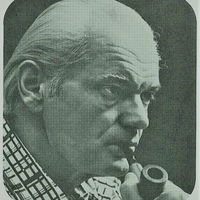

 Cappellusman
Cappellusman Yatagan
Yatagan






